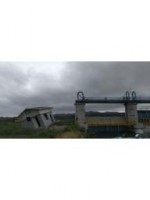My personal safety was always at risk in the society I lived in because I was lesbian. I spent my teens and twenties as someone who could not take for granted the right to be free from threats and violence. Even now, as a lesbian filmmaker who has come out through media, I hear sad news of people who cannot be called by their birth names even in their death, people we cannot properly mourn.
With the inauguration of President Park Geun Hye in 2013, South Korean society r...
more
My personal safety was always at risk in the society I lived in because I was lesbian. I spent my teens and twenties as someone who could not take for granted the right to be free from threats and violence. Even now, as a lesbian filmmaker who has come out through media, I hear sad news of people who cannot be called by their birth names even in their death, people we cannot properly mourn.
With the inauguration of President Park Geun Hye in 2013, South Korean society rapidly turned conservative, and the specter of fascism and McCarthyism came back with a vengeance. The mad drive of fascist patriotism went for easy game first, and LGBTs became public targets of hate. They were accused of causing social division, and before long came the ridiculous deduction that they must be “commies” taking orders from North Korea. Thus began the Korean version of the Lavender Scare. Then in the Spring of 2014, when grieving families who had lost their children in the tragic sinking of the Sewol ferry took to the streets calling for truth to be brought to light, even they were labeled pro-North Korean communists. This is the way more and more people are being driven out of the bounds of safety today.
Getting bad vibes about these changes from 2013, I became nervous about where this mad drive was headed, and began tracking the signs with my camera. I fervently hoped that my film would not confirm my fears, but I had to watch with dismay as reality became scenes of disaster. This documentary is a reflection of reality in Korean society, seen and lived from the perspective of the filmmaker who is a social minority. Breaking away from chronological order, events in the film are de-structured and re-structured according to the perspective of the filmmaker. The facial expressions and gestures, images and sounds arising from the events paint an unnerving montage of disconnectedness, juxtaposition and collision all at the same time. And as the unfamiliar sight of reality turning to ruins unfold in the film, our questions begin anew.
less










